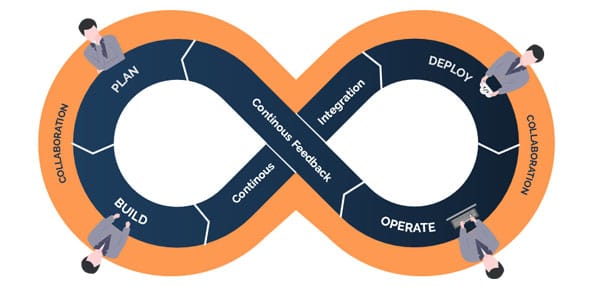Introduction
Yes, you got it right! DevOps, is a set of practices that automates the processes between software development and IT teams, in order that they can build, test, and release software faster and more reliably. It is an enterprise software development phrase used to convey a type of agile relationship between development and IT operations. Its goal is to change and improve the relationship by advocating better communication and collaboration between these two business units.
There are numerous articles already available and more being written each passing minute about the “Why” and “What” of DevOps, i.e. the problem statement itself. But stuff that really matters to anyone trying to jump on the bandwagon is the “How” of DevOps, i.e. the solution to resolve the problem. Every project/team is different and comes with its own set of complex issues to resolve. Therefore, DevOps process cannot be generalized and needs customization on per project basis.
Need for DevOps
DevOps is gradually becoming the absolute need for teams to succeed and deliver fast with high quality. IT companies are engaging DevOps engineers to automate development workflow/pipelines to continuously integrate, continuously deliver and continuously deploy on production servers. DevOps teams utilize many of the same techniques as developers/testers for their setup to work; and participate in the entire software lifecycle, from design through the development process to production support.
For successful adaption to DevOps, development and operations teams need to change the way they interact. DevOps is a collaborative cultural shift for any organization and needs hand-holding from all stakeholders. Software teams have shown significant improvements in all R&D and operation metrics when proper continuous integration and delivery processes are implemented. The CI/CD processes along with Application Performance and Infrastructure Monitoring strategies have helped companies to deliver high quality software in lesser timeframes.
To an extent, Agile development practices can be attributed to the DevOps culture. Agile was all about speed and handling requirements dynamically, which resulted in loss of reliability and quality due to all the shortcuts taken. The pain of integrating and bug fixing unstable code thus resulted in IT industry’s paradigm shift to continuously integrate, test and deliver software. This change made failures less expensive and tackled them as soon as they were identified. Teams, thus, were able to focus on delivering stable features incrementally and more frequently.
“Fail fast, fail often; recover faster.” – Author unknown
- Create a detailed DevOps plan for your use-case
- Utilize cloud hosting solutions to reduce cost and to increase scalability
- Integrate DevOps tools into Service Delivery Platform
- Automate build and release process as much possible to achieve close to 100% CI/CD
- Have extensive checks and balances via test automation both at developer and QA level
- Automate infrastructure provisioning
- Keep a check on performance and infrastructure health via monitoring and logging tools
- Breakdown monolithic modules into micro-services whenever possible to isolate business use-cases and facilitate scalability
- Containers are the next evolution to virtualization so use them to get the most out of it
How to ride the DevOps tide?
The transition to a DevOps model is a time-consuming process and requires lot of effort. Organizations need to bring in a culture of sharing information and create repeatable collaborative processes to benefit the most out of DevOps transition. The answer to “How DevOps” lies in the below mentioned points:
Is it worth trying?
Adoption of DevOps practices helps any organizations in various ways. Few of them are mentioned below:
1. Operational advantages:
- Better collaboration amongst project teams
- Better release control and versioning
- Increases development velocity
- Faster delivery of new features
- Frequent software releases
- Reduced IT cost
2. Business advantages:
- Increased customer satisfaction
- Reliable delivery schedules
- Reduced cost over time
- Improves employees’s productivity and satisfaction

Final thoughts…
Well, just like going to a gym, DevOps may hurt at first when adopting new practices. The more you indulge in it and utilize it for your use case, the easier you will find it, and will help you flex your muscles the way you want. By implementing the right DevOps tools and processes, you will see faster shipping of higher quality and better-supported releases.


